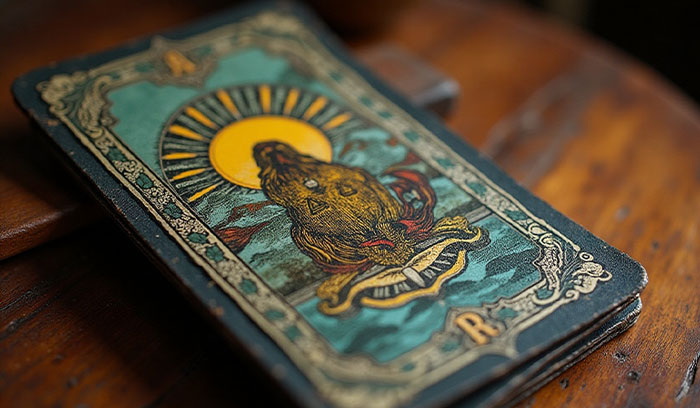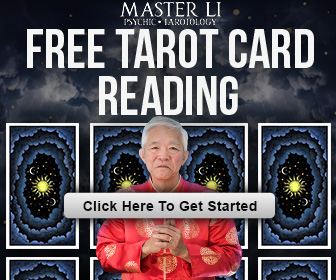The question “Are tarot cards real?” has sparked endless discussion in spiritual and skeptical circles alike. As a professional tarot reader with over 10 years of experience conducting thousands of readings, I’ve witnessed firsthand the profound impact these illustrated cards can have—but perhaps not in the way you might expect.
By the end, you’ll have a nuanced understanding that transcends simple “yes” or “no” answers about tarot’s validity.
Table of Contents
Defining “Real”: What Are We Actually Asking?
Literal vs. Symbolic Reality
When people ask if tarot is real, they typically mean one of three things:
-
Do they predict the future?
(The fortune-telling perspective) -
Do they access supernatural knowledge?
(The psychic medium perspective) -
Do they provide meaningful insights?
(The psychological tool perspective)
The Professional Reader’s View
In my practice, I’ve found tarot to be “real” in these specific ways:
-
As projection tools that reveal subconscious thoughts
-
As archetypal mirrors reflecting universal human experiences
-
As focusing devices that sharpen intuition
-
As ritual objects that create sacred space
But are they “real” like a mathematical equation or historical fact? That’s where things get interesting.
The Psychology Behind Why Tarot Feels Real
The Barnum Effect in Action
Psychologists have identified why tarot readings often feel uncannily accurate:
-
Vague statements apply to nearly everyone (“You’ve been feeling uncertain lately”)
-
Positive affirmations feel true because we want them to be
-
Selective memory makes us recall “hits” and forget “misses”
Cognitive Biases at Play
Several mental shortcuts explain tarot’s persuasive power:
-
Confirmation Bias: We focus on what matches our beliefs
-
Pattern Recognition: We connect random cards into meaningful narratives
-
Emotional Resonance: We remember what feels significant
Scientific Perspectives on Tarot’s Validity
Neuroscience Findings
Brain imaging studies reveal:
-
Divination activates the anterior cingulate cortex (associated with intuition)
-
Regular practice strengthens pattern recognition abilities
-
The ritual induces a light meditative state conducive to insight
Statistical Reality Check
Research shows:
-
Tarot predictions are no more accurate than chance for future events
-
However, they’re remarkably effective for self-reflection and problem-solving
-
The placebo effect of believing in readings can create real behavioral changes
How Professional Readers Approach the Question
My Personal Experiences
In my practice, I’ve observed:
-
Eerie coincidences where cards mirror clients’ situations exactly
-
Patterns repeating across multiple readings for the same person
-
Clients recognizing truths they’d been avoiding
Yet I’ve also seen:
-
Complete misses where readings made no sense
-
Cultural differences in interpretation
-
Changing outcomes when free will was exercised
The Ethical Reader’s Stance
Most professional readers agree:
✅ Tarot is “real” as a psychological and spiritual tool
⚠️ But not as a paranormal certainty engine
💡 Its greatest power lies in facilitating insight, not fortune-telling
Differentiating Between Fortune-Telling and Intuitive Guidance
The Fortune-Telling Model
Assumes:
-
Future is fixed and knowable
-
Cards reveal predetermined outcomes
-
Reader has special access to hidden information
Problems:
-
Creates dependency
-
Disempowers the querent
-
Often proves inaccurate
The Intuitive Guidance Model
Approach:
-
Present is fluid and changing
-
Cards suggest possibilities and patterns
-
Reader helps interpret symbolic meanings
Benefits:
-
Encourages personal responsibility
-
Focuses on actionable insights
-
Respects free will
Common Questions From Skeptics (And My Responses)
“Isn’t it just cold reading?”
Partly yes, but:
-
Cold reading explains some accuracy
-
Doesn’t account for specific, personal details
-
Many readers genuinely believe in their intuitive process
“Why do different readers give different interpretations?”
Because:
-
Tarot is symbolic language, not code
-
Context and question shape meaning
-
Reader’s intuition plays a role
“Can’t you make the cards say anything?”
To some degree, but:
-
Certain interpretations stretch credibility
-
Ethical readers follow traditional meanings
-
The best readings feel organically right
How to Use Tarot in a Grounded, Healthy Way
Best Practices for Believers
-
Maintain perspective – Cards suggest, don’t dictate
-
Stay flexible – Outcomes can change
-
Verify insights – Check against real-world evidence
Advice for Skeptics
-
Try it as psychological experiment
-
Notice what thoughts/feelings arise
-
Appreciate the metaphorical wisdom
Conclusion: A Reality Beyond True or False
After years of professional use, I’ve concluded tarot is “real” in the same way dreams, art, or intuition are real—not as objective factual reality, but as meaningful subjective experience.
The cards become a mirror for truths we already know but haven’t acknowledged, a canvas for our subconscious to paint upon, and a ritual that focuses our inner wisdom.
Ultimately, the question “Are tarot cards real?” may be less important than “Are they helpful?” When used with wisdom, tarot offers a uniquely powerful way to access self-knowledge, consider different perspectives, and navigate life’s complexities with more clarity and confidence.


